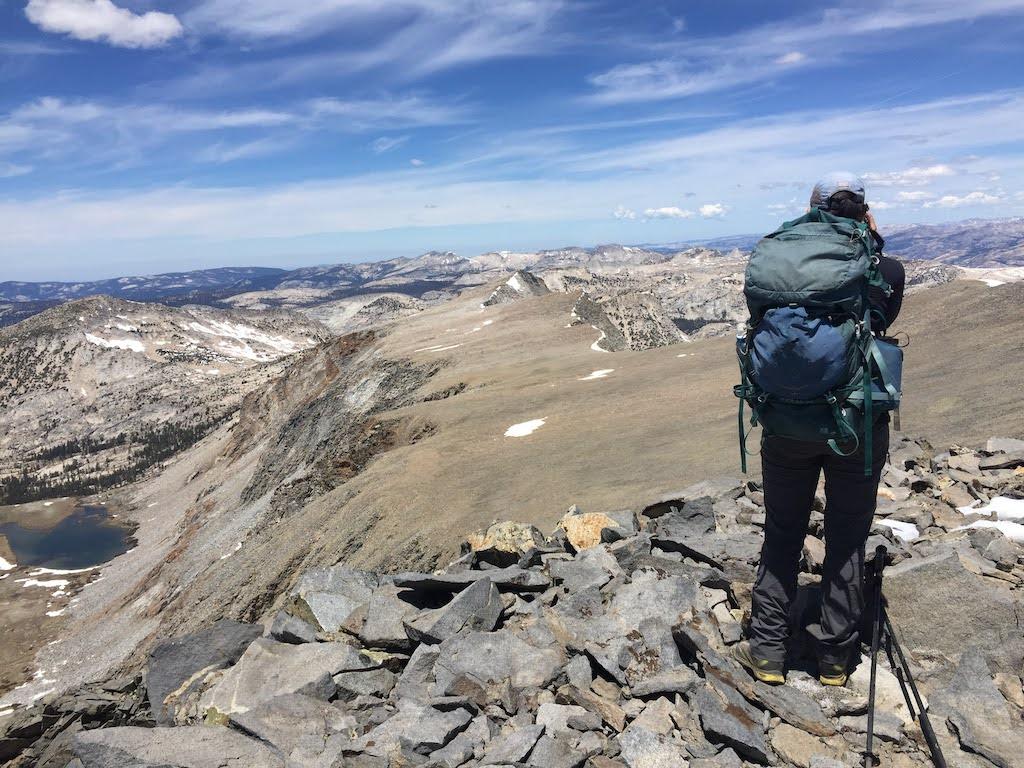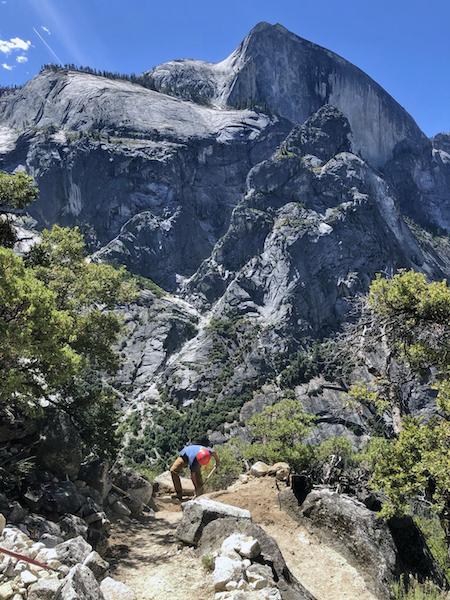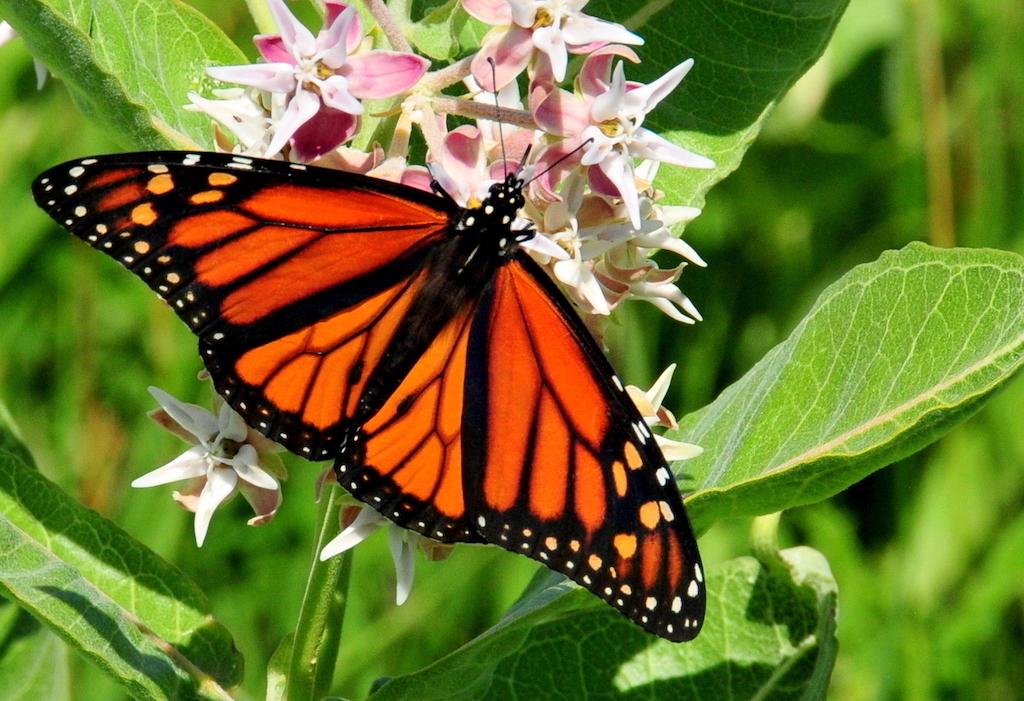
Funding from the Yosemite Conservancy enabled a number of research programs in the park, including one focused on bighorn sheep/NPS
In a year that has tested and strained national parks and National Park Service staff at times because of the coronavirus pandemic, the Yosemite Conservancy has been able to provide $14 million for education, preservation, research and other projects at Yosemite National Park.
“Yosemite inspires daily and in difficult times,” said Yosemite Conservancy President Frank Dean. “It feels more important than ever for the Conservancy to support improvements all around the park, to preserve its natural and cultural wonders, and to offer ways for people to connect with Yosemite in person and from afar.”
Conservancy-funded grants this year are going to more than 35 beneficial projects in the park. Among wildlife-focused grants, a study completed this summer revealed peregrine falcons are nesting in places never before recorded. That research helps wildlife managers refine strategies to protect the falcons’ breeding areas.
Another grant is focusing on reestablishing populations of vulnerable amphibians, allowing researchers to release more than 100 Sierra Nevada yellow-legged frogs in high country lakes, and to study previously released California red-legged frogs in Yosemite Valley using microchip readers. This fall, another project will expand monarch butterfly habitat in Yosemite Valley by removing non-native plants and planting native flora.
“Our 2020 projects are a powerful testament to our donors’ generosity and love of the park,” said Dean. “They also speak to our positive and productive partnership with the National Park Service, and to the incredible dedication of our staff and partners to have our work continue in a meaningful way during this turbulent year.”
Restoration projects that Conservancy donors are supporting in 2020 include repairs on popular trails in Yosemite Valley, including the Mirror Lake, Yosemite Falls and Four Mile trails, as well as California Conservation Corps crews’ work to improve backcountry trails. Work is also underway to revitalize wetlands in eastern Yosemite Valley by planting native vegetation and installing a boardwalk to enable people to cross the area without harming habitat.

Among the restoration projects tackled was work on the Snow Creek Trail/NPS
In Yosemite Village, historic preservation experts repaired a stone fireplace in the 100-year-old Rangers’ Club, which is a National Historic Landmark and the product of early 20th-century park philanthropy.
As restoration projects move ahead on the ground, Dean said several Conservancy-supported educational programs adapted to the pandemic by shifting to virtual platforms. “We’re all trying new things and making daily adjustments as we search for a new equilibrium,” he said.
Some Conservancy-supported youth programs, including Adventure Risk Challenge, WildLink and the Yosemite Leadership Program, have adjusted by engaging students in online activities, in addition to or instead of their usual in-person programming.
While in-person “Ask a Climber” activities were paused, climbing rangers shared a “day in the life” look at their work on the walls via video. The annual Parsons Memorial Lodge Summer Series, which features presentations by writers, researchers, artists and adventurers, was shared with an online audience through videos posted on Facebook and on the Yosemite National Park and Conservancy websites.
The Conservancy also supports the park through a variety of visitor programs and retail operations. The pandemic prompted the cancellation of many of the Conservancy’s usual activities in the park for the 2020 season, including volunteer programs and Yosemite Theater shows. Still, the organization continues to support visitor education and engagement in the park, including by offering naturalist-led adventures and custom art classes, operating a contact-free bookstore in Yosemite Village, and managing the online wilderness permit process. The Conservancy’s four webcams, which show El Capitan, Half Dome, the High Sierra and Yosemite Falls, have continued to help people connect with the park from afar.
Thanks to generous donors, the Conservancy has provided more than $130 million in grants to the park to restore trails and habitat, protect wildlife, provide educational programs, and more. The Conservancy’s guided adventures, art classes, volunteer opportunities, wilderness services and bookstores help visitors of all ages to connect with Yosemite. Learn more: yosemite.org or 415-434-1782.

Butterfly habitat in the Yosemite Valley also benefited from the Yosemite Conservancy's funding/USFWS



Comments
One of the best parnterhips in the NPS. Glad to see this and hope the strong partnership continues!
You can call me just an old stick-in-the-mud ...or worse if you wish. However, in addition to their contributions as a genuine conservation and education group, one of the things that I admire and very much appreciate about this organization, about the Yosemite Conservancy, is their apparent commitment to open disclosure and transparency in their finances.
You can go to their website and easily find the link that takes you directly to copies of their annual Form 990 federal tax filings. You can easily drill down through a number of years of their filings, look at how much they spent on salaries, how much they maintained as net assets, and how much went back to the park. And, you can assess some of the trends. Some, in fact many, 501(c)(3) park support nonprofits don't seem to take as much care to properly disclose their Form 990 filings. They take advantage of the tax benefits associated with being a 501(c)(3); but, searching through their websites, it's often difficult, if not impossible, to see where their Form 990 filings are being properly and publicly posted. Some of them post a colorful pie chart, usually only of their most recent year, rather than their actual Form 990 filings; but, a colorful pie chart neither carries the legal standing nor properly conveys the detail of actual Form 990 filings. One is left to wonder why these organizations bothered to go to the extra effort of creating pie charts that actually provide less information instead of just posting their Form 990 filings where they would be easy to find. Is something being left out and, if so, why? Instead, the Yosemite Conservancy's actual Form 990 filings are posted up front where they're easy to find. The Yosemite Conservancy is a 501(c)(3) park support nonprofit that sure seems to do things right.
An organization's Form 990 filings don't and aren't designed to tell you everything about how an organization behaves and I sure don't expect any organization to be perfect. You also have to keep track of how the filings mesh with what the organization seems to actually be doing day-to-day. But, if a 501(c)(3) nonprofit properly discloses its Form 990 filings, especially if it discloses them in a timely manner; it helps the financially literate public make good decisions about where their hard-earned donation dollars should go.
The Yosemite Conservancy also does it right by defining their fiscal year, their tax year, to run from the beginning of January through the end of December, just like the calendar year that serves as the tax year for most of the rest of us. Thus, not only does choosing the calendar year do a fine job of conveniently bracketing the Yosemite Conservancy's busy summer season; it also enables the rest of us to easily, intuitively, and instantly comprehend the period being addressed because it matches our own financial frame of reference. The Yosemite Conservancy then uses a perfectly acceptable extension on getting its filings completed and audited; but, by the middle of the following year and roughly six months after the end of their previous fiscal year, the public can already see and review what happened that previous year.
Frankly, the old saying about idle hands being the devil's workshop absolutely applies when an organization keeps its books open for a prolonged "dead" period. Quickly closing out the fiscal year, expeditiously completing and auditing filings, and promptly disclosing them to the public is actually one of the best ways to discourage "cooking" the books. Instead, the quick, efficient, and clear way that the Yosemite Conservancy seems to do business oozes transparency and open disclosure and instills trust, certainly my trust, in the Yosemite Conservancy as a nonprofit.
Not every 501(c)(3) park support nonprofit does things as well as the Yosemite Conservancy. Although Yellowstone Forever (YF) does prominently post their Form 990 filings, a closer look reveals some disconcerting issues. For example, for some reason, YF has chosen to define their fiscal year not to run concurrent with the calendar year, but to run from March 1st through February 28th, which itself seems to be unnecessarily confusing to the average reviewer. But, to see the full impact, let's look at YF's most recently posted Form 990 filing, which they have posted as being their "FY19" filing with the implication that it somehow covers the year 2019. However, a review of their "FY19" Form 990 filing reveals that it actually covers the period from March 1, 2018, through February 28, 2019, and doesn't actually cover much of 2019 at all. Thus, the financial information contained in their "FY19" Form 990 federal tax filing was actually delayed by nearly a full year even by the time that fiscal year closed and it actually was more of a 2018 reporting. That kind of delay, alone, would seriously limit the applicability, diminish the value, of YF's disclosed financial information in any investment scenario, including to members of the financially literate public trying to make good decisions about where their hard-earned donation dollars should go.
But, the issues don't stop there. Looking again at YF's "FY19" Form 990 federal tax filing reveals that not only did it actually cover the period from March 1, 2018, through February 28, 2019, it was not signed until mid-January of 2020 and not publicly disclosed until even later. Thus, the financial activities of this 501(c)(3) park support nonprofit, a 501(c)(3) nonprofit allowed to operate retail outlets and collect donations on federal property, in federal facilities, for relatively little or no conventional rent and with relatively little oversight, in a prestigious national park, with annual access to millions of dollars in well-intended public contributions as a result, were not revealed to the public until arguably close to eighteen months after the most important of those activities took place. Given that most of us are required to disclose and file our financial activites within less than four months, how might the Internal Revenue Service react if many, if not most, of the rest of us tried to delay that long?
Again, the Yosemite Conservancy is a 501(c)(3) park support nonprofit that sure seems to do things right. As a lifelong Yellowstone devotee and supporter, it is embarrassing to admit that the Yosemite Conservancy and not Yellowstone Forever should be used as the role model.